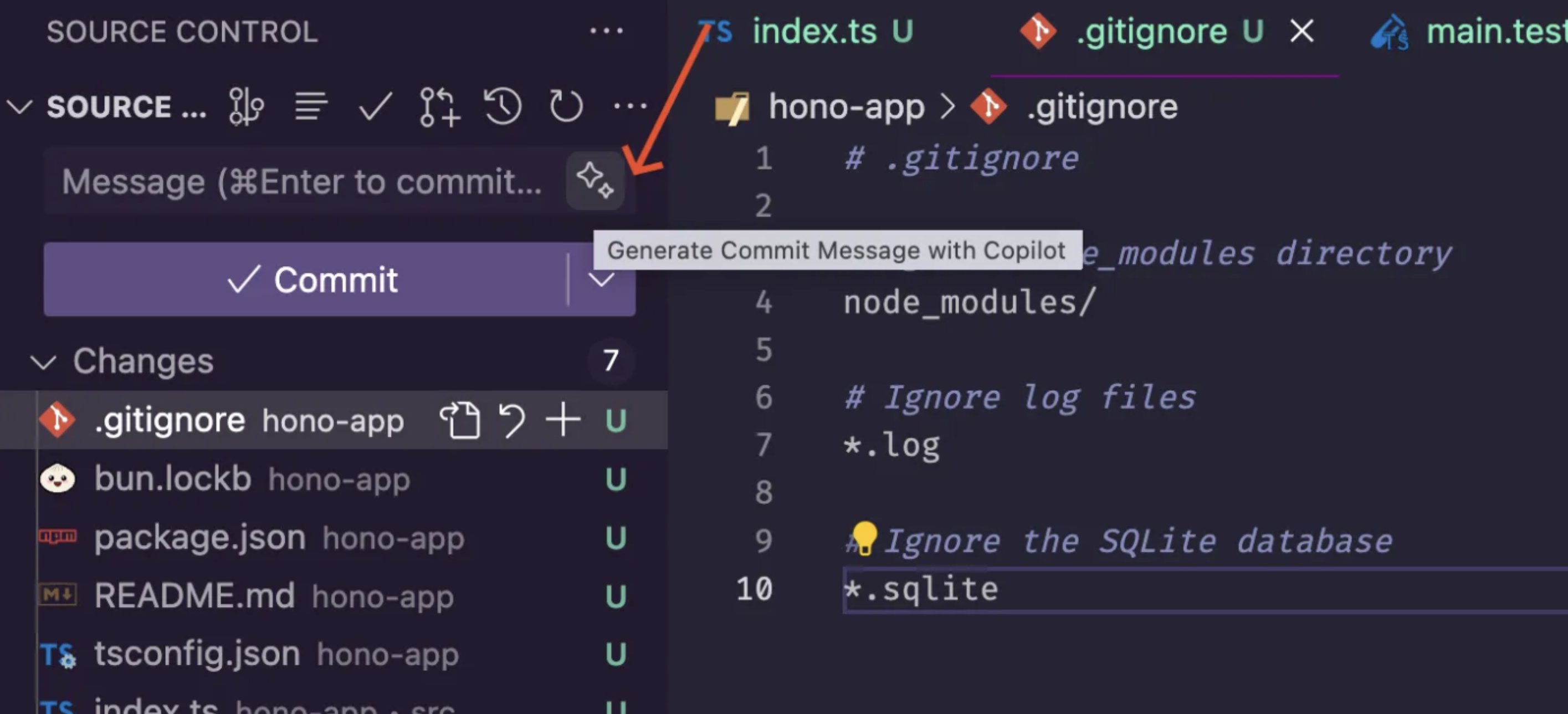Let’s face it - writing good commit messages can be a chore! 📝 But what if AI could do the heavy lifting for you? Today, I’m sharing how you can use AI to generate meaningful commit messages right in VS Code. This small change to your workflow can save time while improving your commit history quality!
🤔 Why Good Commit Messages Matter
Before diving into the AI tools, let’s remember why we care about commit messages:
- They provide context for future you (and your teammates)
- They make debugging and code archaeology much easier
- They help with generating changelogs
- They create a useful history of your project’s evolution
The problem? Writing good ones takes time and mental energy that could be spent solving actual problems!
🛠️ AI-Powered Solution in VS Code
Using VS Code’s message generator is as simple as 1-2-3:
- Open the Source Control view.
- Click the star icon next to the message input field.
- Voila! A pre-populated message summarizing your changes appears, ready to be tweaked and approved.

Combining with Conventional Commits
I like using Conventional Commits. You can provide an instruction to VS Code by adding the following in your settings.json file:
"github.copilot.chat.commitMessageGeneration.instructions": [
{
"text": "Follow the Conventional Commits format strictly for commit messages. Use the structure below:\n\n```\n<type>[optional scope]: <gitmoji> <description>\n\n[optional body]\n```\n\nGuidelines:\n\n1. **Type and Scope**: Choose an appropriate type (e.g., `feat`, `fix`) and optional scope to describe the affected module or feature.\n\n2. **Gitmoji**: Include a relevant `gitmoji` that best represents the nature of the change.\n\n3. **Description**: Write a concise, informative description in the header; use backticks if referencing code or specific terms.\n\n4. **Body**: For additional details, use a well-structured body section:\n - Use bullet points (`*`) for clarity.\n - Clearly describe the motivation, context, or technical details behind the change, if applicable.\n\nCommit messages should be clear, informative, and professional, aiding readability and project tracking."
}
]
💡 Tips for Better AI-Generated Commit Messages
Even with AI help, here are some tips to get the best results:
- Review before committing: Always check what the AI generated - it’s not perfect!
- Make atomic commits: Smaller, focused changes lead to better AI-generated messages
- Add custom context: Some extensions let you add notes to guide the AI
- Customize templates: Adjust the AI’s output style to match your team’s conventions
🚀 My Experience
I’ve been using AI-generated commit messages for the past month, and it’s been a game-changer! Not only does it save me time, but the quality of my commit history has actually improved. The AI tends to be more thorough and consistent than my manual messages, especially for small routine changes where I might have just written “fix bug” or “update styles” 😅.
My team has also noticed the improvement in our repository’s commit history. Finding specific changes is easier, and our changelogs practically write themselves now!
🔮 The Future of Development
This is just one example of how AI is transforming little parts of the development workflow. While not revolutionary on its own, these small improvements add up to significant productivity gains.
What’s your favorite AI-powered development tool? Have you tried generating commit messages with AI? Let me know in the comments below! 👇
Happy coding (and committing)! ✨





Leave a comment